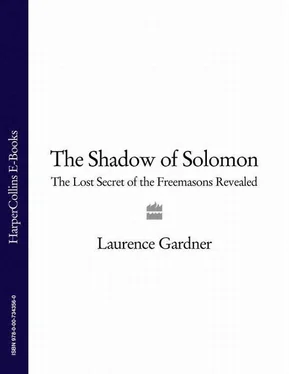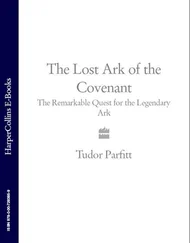To the early Merovingian Kings of the Franks (AD 451-751), 7King Solomon was the model of earthly kingship, and the bee was a most hallowed creature. When the grave of the 5th-century King Childeric I was unearthed in 1653, some 300 small golden bees were found stitched to his cloak. Emperor Napoleon I Bonaparte had these attached to his own coronation robe in 1804—claiming his right by virtue of a family descent from James de Rohan-Stuardo, the natural son (legitimized 1677) of Charles II Stuart of Britain by Marguerite, Duchesse de Rohan. In modern Freemasonry, the beehive is used as an emblem of industry, bonding and mutual service.
Following the death of Sir Christopher Wren in 1723, those at the forefront of Hanoverian Freemasonry began to formulate an historical backdrop for their evolving, non-operative Craft. Such things as tolerance and benevolence were cemented as objectives, while signs and tokens were established, along with the aim of building a socially aware community. There was little similarity between this and the more scientific or architecturally based movements whose format they endeavoured to emulate, but a convenient biblical metaphor was to hand—the building of Solomon’s Temple. By way of allegory and symbolism, the methods of the Hiramic masons of Jerusalem could be used as emblematic models for building an exemplary Craft culture—and within such a framework it was logical enough to adopt the guise of a stonemasons’ guild. That apart, there does appear to have been some friction at the outset between the premier Grand Lodge and the operative trade guilds with which they sought alignment, but this was soon overcome. 8This seems to have been effected by enticing high-ranking nobility into the fold, with John, 2nd Duke of Montagu accepting the Grand Mastership in 1721, followed by Philip, Duke of Wharton on 17 January 1723.
Only from that date were any Minutes kept of the meetings. Anderson’s first Constitutions were officially sanctioned, and it was determined that new lodges could only be considered ‘Regular ‘ (legitimate) if they were constituted by the Grand Master or an appointed deputy. So, in spite of the initial socially-minded objectives, the first real moves in the process of establishing an institute of fraternal ‘equality’ were actually the denial of freedom in the field, and the creation of a dictatorial hierarchy! In parallel, much the same was happening within the confines of the Royal Society as it became more bureaucratic and exacting in the Georgian style.
Although installed as King of Britain in 1714, George I openly mistrusted the English since they had already rid themselves of two kings in the previous 65 years, and had executed the Queen of Scots prior to that. He preferred to rely on his German ministers and, since he could not speak a word of English, George ran his kingly affairs from Hanover with his prime minister Robert Walpole holding the reins at Westminster from 1721.
George II succeeded his father in 1727, only to display a similar lack of empathy with the populace. Ten years later, however, King George’s eldest son Frederick, Prince of Wales, was initiated into Freemasonry at Kew, and Grand Lodge thereby gained its first royal member. 9His membership was of little consequence though—and in opposition to his father, Frederick joined the Stuart cause after the 1745 Jacobite Rising of Bonnie Prince Charlie. During the course of this civil war and the simultaneous War of Austrian Succession (1740-48), there was very little lodge activity recorded, and it is claimed that, because of these campaigns, English Freemasonry fell into a severe decline. That is the official story—in practice quite the reverse was the case; the lodges were never so lively as they were during that era.
So much has been written about Charles Edward Stuart and his attempt to regain the crowns of his grandfather, King James II (VII), that it is not possible to retell the whole story here, except for those parts of it that directly concern Freemasonry.
Despite an encouraging start in September 1745, and some Scots victories against the troops of King George’s son William, Duke of Cumberland, the campaign met a disastrous end at Culloden Moor on 16 April 1746. There followed the Prince’s dramatic flight to Skye with Flora Macdonald—the rest is romantic history. In the course of all this, masonic lodges (by virtue of their secrecy) became the perfect centres for intelligence operations on both sides. Notwithstanding the regulations imposed by Grand Lodge for the licensed constitution of all other lodges, there were many lodges in London and the provinces that ignored this directive. Just because the Whig aristocracy had established their presence within the premier Grand Lodge, this did not mean there were no Tory lodges classified as ‘Irregular ‘ by the tavern-club movement. Such lodges were especially prevalent in Wales and the West of England, and the Whig and Tory opposition lodges became nests of spies and secret agents, each endeavouring to infiltrate the other to gain inside information.
Although many of the aristocratic families created after 1688 were inclined to be Whigs, many of the older landed families retained their Tory position and their traditional Stuart support—which did not end with the Battle of Culloden. Even after the Rising, Jacobitism was rife in Northumbria, through the Midlands, down to the south of the country. Across the land there was an active network of Jacobite societies and Tory lodges in major centres such as London, Liverpool, Preston, Norwich, Bristol and Manchester.
Wherever Charles Edward travelled south of the Border, there were prestigious safe houses at his disposal. They included Stoneleigh Abbey (baronial seat of the Leighs of Warwick), Marbury Hall, Cheshire (the home of James, Earl of Barrymore—Member of Parliament for Wigan and leader of the English Jacobites), 10Malpas Hall, Cheshire (belonging to the Stuart envoy Richard Minshull) and Blythefield Hall, Staffordshire (seat of the noble Bagot family). In London, Charles stayed at the Essex Street home of Lady Anne Primrose, the widow of Hugh, 3rd Viscount Primrose (ancestor of Lord Rosebery). Anne had been involved with the Jacobite cause during the 1745 Rising and, following Flora Macdonald’s imprisonment in England, it was Lady Anne who secured her release and gave her financial aid. A particularly significant visit by the Prince to Lady Anne’s London house is recorded in the Stuart Papers at Windsor as having occurred on 16-22 September 1750, some years after the Rising. 11
In 1752, Charles stayed at Westbrook House in Godalming, Surrey, with Eleanor Oglethorpe, 12sister of the Crown agent James Oglethorpe, who founded Georgia, USA, and built Savannah. Eleanor worked for the Stuarts with the famed Jacobite agent Dr Samuel Johnson, and with Dr William King, Principal of St Mary Hall, Oxford. Other English supporters of the Prince included the Earls of Cornbury and Derwentwater, the Lords of Chesterfield, Bath, Sandwich and Pultney, along with the Dukes of Somerset, Westmorland, Beaufort 13and, perhaps most surprisingly, King George II’s own son Frederick, Prince of Wales, who was instrumental in helping Lady Anne to secure the release of Flora Macdonald. 14
In the Welsh sector (which included the Shropshire and Cheshire border country) there were three prominent Jacobite lodges to which many of the nobility and gentry belonged. In the south were the Sea Serjeants of Carmarthen, whose headquarters was the Masonic Lodge at the Red Lion in Market Street. 15In mid-Wales was the Tory gentle-men’s Montgomeryshire Club of Twenty-Seven, while the north oper ated through another Tory lodge called the Cycle of the White Rose. 16This was headed by Sir Watkin Williams Wynn, Lord Lieutenant and Member of Parliament for Denbighshire. The Cycle was headquartered at Sir Watkin’s house at Winnstay; then (following his death in 1749) at his widow’s property, Llangedwyn Hall near Oswestry.
Читать дальше












